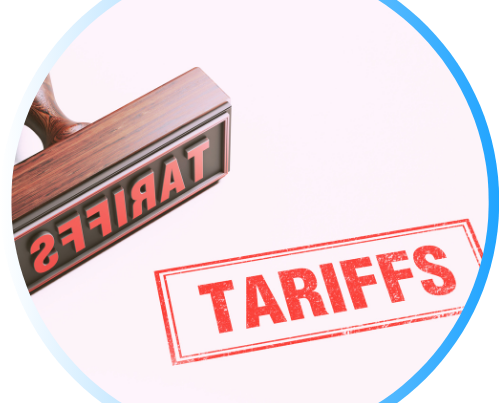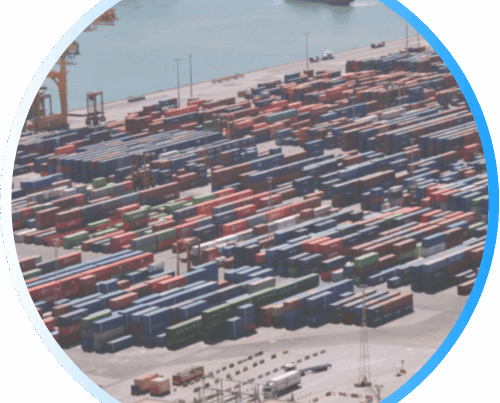Rate Related Update and Market Conditions
Market Conditions
TPEB (Trans-Pacific Eastbound)
-
Trans-Pacific demand remains steady into August, showing little deviation from July levels. Rate activity is calm, with the August 1 General Rate Increase withdrawn and Peak Season Surcharge removed entirely for the month. Carriers have extended first-half August rates, and further mitigations for the East Coast and Gulf reflect the flat demand and absence of peak surcharges.
FEWB (Far East Westbound)
-
Far East Westbound demand is stable, with early August sailings already highly utilized. Freight All Kinds rates for August are trending 5–8% higher than late July, and the Shanghai Containerized Freight Index is expected to rise modestly. Major retailers are planning a volume ramp-up for September, which may fuel further rate increases later this month. Carriers have begun adjusting PSS levels on long-term contracts in preparation for that growth.
TAWB (Trans-Atlantic Westbound)
-
On the Trans-Atlantic Westbound lane, rates remain largely unchanged, with PSS announcements pushed back until at least the end of Q3 for Northern Europe and the West Mediterranean. In the East Mediterranean, some carriers are introducing GRIs for September. Despite mounting operational challenges in Europe, pricing has held steady overall.
Operational Updates
TPEB:
-
Typhoon disruptions in Ningbo and Shanghai this week caused temporary halts on empty container pickups and are expected to create some vessel delays. Equipment access is improving overall, but shortages linger with certain carriers, particularly CMA and HMM.
FEWB:
-
The same typhoon activity has paused container movements in key Chinese ports, while equipment availability is uneven—most carriers have stabilized supply, though CMA and HMM remain constrained.
TAWB:
-
European ports continue to struggle with significant congestion: Antwerp’s dwell times now exceed eight days, while Rotterdam, Hamburg, and Bremerhaven are seeing yard usage in the mid-80% range, causing multi-day vessel delays. Container and chassis shortages remain severe in inland Europe, particularly across Austria, Slovakia, Hungary, southern and eastern Germany, and Portugal.
Capacity Management
TPEB:
-
Vessel deployment remains robust, with capacity sitting at 70–80% of normal levels. Despite minor service suspensions, space remains widely available, underscoring the ongoing imbalance between supply and demand.
FEWB:
-
Capacity is tight for early August as vessels fill quickly, with utilization high and bookings already firming for later in the month. Carriers are actively preparing for an expected late August surge ahead of September volumes.
TAWB:
-
Capacity on the Trans-Atlantic trade is steady, and blank sailing rates have eased to roughly 4–7%—a month-over-month decline that signals carriers are maintaining overall stability in space management.
Sources: xeneta.com, maersk.com, yangming.com, evergreen-line.com, supplychaindive.com
📌 Current U.S. Tariff Status (as of August 1, 2025)
-
Sweeping Tariff Changes Announced: On August 1, 2025, President Trump outlined new tariff rates on dozens of trade partners, establishing a baseline 10% duty on all countries and sharply raising rates on key markets. Canada’s tariff rate climbs to 35%, effective immediately, while many “reciprocal” tariff rates will take effect on August 7.
-
Copper Tariff Implemented: Effective August 1, the U.S. imposed a 50% tariffon semi-finished copper products such as pipes, rods, and sheets, but excluded copper scrap and raw inputs. This move triggered major market shifts, with traders adjusting flows between U.S. and global exchanges.
-
De Minimis Exemption Ending: An executive order signed July 30 ends the de minimis exemption for low-value imports under $800. Tariffs will apply starting August 29, affecting e-commerce shipments and international postal deliveries.
-
Country-Specific Developments:
-
Mexico received a 90-day reprieve on higher tariffs as negotiations continue.
-
The EU reached a preliminary trade agreement setting a 15% tariff on EU goods, including autos, pharmaceuticals, and semiconductors.
-
Brazil faces 50% tariffs on many goods, with exemptions for aircraft parts and orange juice.
-
Bangladesh secured a 20% tariff rate on garment exports, down from an initially proposed 37%.
-
Thailand and Cambodia signed trade agreements but will still see a 36% tariff starting August 1.
-
India remains under negotiation, but currently faces a proposed 25% tariff.
-
China Talks Continue: The U.S. and China wrapped up a third round of trade negotiations on July 29 and are considering extending their 90-day tariff pause beyond the August 12 deadline, though no final decision has been made.
-
Source: whitehouse.gov, politico.com, whitehouse.gov


US Ports Urge Congress to Adhere to Dredging Fund Law
US port authorities are warning that they could miss out on roughly $1 billion in dredging and maintenance funding. In a letter to Congress, the American Association of Port Authorities (AAPA) and 22 port directors said the US Army Corps of Engineers’ 2025 budget does not fully comply with a 2020 law requiring a fairer allocation of Harbor Maintenance Trust Fund revenues to the ports that contribute most.
LTL Carriers Grow Networks Despite Weaker Demand
US less‑than‑truckload (LTL) carriers are expanding terminals, lanes, and services even as demand for palletized freight remains subdued. Former Yellow Corp. terminals continue reopening after its 2023 bankruptcy, with both regional and long‑haul carriers competing to capture scarce shipments. Industry leaders note that new technology and customer expectations for speed are pushing LTL providers to increase reach despite a softer freight market.


Container Spot Rates Stay Flat as Peak Season Slips
Spot freight rates on major east‑west trades were largely unchanged this week, reflecting a peak season that has yet to emerge. Analysts report falling rates on Asia–Europe and trans‑Pacific routes, with prices nearing pre‑Red Sea crisis levels. While shippers may see some benefit from softer rates, carriers face ongoing overcapacity and continued financial strain as they struggle to balance supply with muted demand.

